Welcome to the captivating realm of hybrid big cats, where different species within the Felidae family, including lions, tigers, and leopards, combine to create fascinating and unique creatures. These majestic beings, known as hybrid big cats, are a result of crossbreeding between different members of the panthera genus. The world of hybrid big cats is filled with intriguing stories, ancient history, and extraordinary physical traits. Join me as we embark on a journey to uncover the secrets of these captivating creatures.
- Hybrid big cats are created through the crossbreeding of species within the Felidae family.
- Ligers and tigons are well-known examples of hybrid big cats.
- Hybridization can increase genetic diversity in captive populations but raises ethical concerns.
- Rare cases of hybridization involve species such as jaguars, leopards, and lions.
- Hybrid big cats exhibit physical traits and sizes influenced by both parent species.
What are Hybrid Big Cats?
Hybrid big cats are the result of crossbreeding different species within the Felidae family, resulting in fascinating hybrids with characteristics from both parent species. These hybrids, also known as big cat hybrids, have captivated the imagination of many due to their unique appearances and genetic diversity. By combining the genetic traits of lions, tigers, leopards, and jaguars, hybrid big cats exhibit a mesmerizing blend of features that distinguish them from their purebred counterparts.
Throughout history, hybridization within the Felidae family has been documented in various ancient civilizations, including Egypt and Mesopotamia. The records from these civilizations provide valuable insights into the early instances of hybrid big cats, highlighting the long-standing fascination humans have had with these extraordinary creatures.
When it comes to naming conventions, hybrid big cats can have different labels based on their parentage, generation, or physical characteristics. Some well-known examples include ligers and tigons. Ligers, which are the result of crossbreeding a male lion with a female tiger, are renowned for their massive size, often surpassing both parent species. On the other hand, tigons are the offspring of a male tiger and a female lion, showcasing a striking combination of traits inherited from each parent. These naming conventions help to categorize and identify the unique characteristics of each hybrid big cat breed.
As fascinating as hybrid big cats are, the practice of hybridization raises ethical concerns. While hybridization can enhance genetic diversity in captive populations, it also raises questions about the welfare and conservation of these magnificent animals. Furthermore, if hybrid big cats were introduced into the wild, they could potentially disrupt ecosystems and natural balances. Therefore, it is crucial to carefully consider the ethical implications and long-term effects of hybridization in order to protect the integrity of both hybrid and purebred species.

| Hybrid Big Cat Breed | Parentage | Characteristics |
|---|---|---|
| Liger | Lion (male) x Tiger (female) | Large size, striped fur, docile temperament |
| Tigon | Tiger (male) x Lion (female) | Striped fur, smaller size compared to ligers, fierce temperament |
| Liliger | Lion (male) x Liger (female) | Varying size, traits inherited from both parent species |
| Tiliger | Tiger (male) x Liger (female) | Varying size, traits inherited from both parent species |
“Hybrid big cats are a testament to the extraordinary diversity within the Felidae family. Their existence not only showcases nature’s ability to create fascinating combinations but also prompts us to consider the ethical implications of our actions. As stewards of these remarkable creatures, it is our responsibility to ensure their well-being and protect their future.”
The History of Hybrid Big Cats
The history of hybrid big cats dates back centuries, with early records found in ancient Egypt and Mesopotamia. These ancient civilizations had a fascination with wild animals and often kept them as symbols of power and prestige. It is believed that the Egyptians, in particular, had a deep understanding of animal biology and actively bred different species to create unique hybrids.
One of the most famous examples of hybrid big cats in ancient Egypt is the sphinx, a mythical creature with the body of a lion and the head of a human. This iconic statue represents the ancient Egyptians’ admiration for the strength and prowess of big cats. They believed that by combining different species, they could harness the best qualities of each and create a superior creature.
Ancient Mesopotamia, a region that encompasses modern-day Iraq and parts of Iran and Syria, also had a rich history of hybrid big cats. The Mesopotamians depicted these majestic creatures in their art and literature, often associating them with their deities. These hybrid cats were seen as divine beings, guarding temples and protecting the people.
Today, the legacy of hybrid big cats continues to captivate us. Through careful breeding and genetic manipulation, humans have been able to create remarkable hybrids with traits from both parent species. These hybrids serve as a testament to our ongoing fascination with the natural world and our desire to explore the boundaries of what is possible.

Naming Conventions of Hybrid Big Cats
Hybrid big cats can have different naming conventions based on parentage, generation, or physical characteristics. These unique naming conventions help to identify and distinguish the various hybrid species within the Felidae family. Some of the most well-known examples include ligers and tigons.
Ligers, for instance, are the result of crossbreeding a male lion and a female tiger. They inherit physical traits from both parent species, with the size and strength of a lion and the distinctive stripes of a tiger. Ligers are known to be the largest of all hybrid big cats and have captivated the public’s fascination for centuries.
Tigons, on the other hand, are the offspring of a male tiger and a female lion. While they may resemble lions in terms of their physical appearance, tigons inherit the bold patterns and powerful build of their tiger parent. Although smaller in size compared to ligers, tigons are equally intriguing and have their own unique charm.
| Hybrid Big Cat | Parentage | Physical Characteristics |
|---|---|---|
| Liger | Lion (male) + Tiger (female) | Lion-like size, tiger-like stripes |
| Tigon | Tiger (male) + Lion (female) | Tiger-like build, lion-like appearance |
Other Naming Conventions
Aside from ligers and tigons, there are other hybrid big cat breeds that have gained recognition in recent years. For example, liligers are the result of breeding a male lion with a female liger, while tiligers are the offspring of a male tiger and a liger. These hybrid combinations produce fascinating specimens that exhibit a mix of physical traits from all parent species.
Furthermore, congolese spotted lions are the result of crossbreeding a lion and a leopard. These unique hybrids possess spots instead of the usual lion’s mane, creating a striking visual appearance.
The different naming conventions used for hybrid big cats not only reflect their parentage and physical characteristics but also serve as a testament to the diversity and wonder of the natural world.
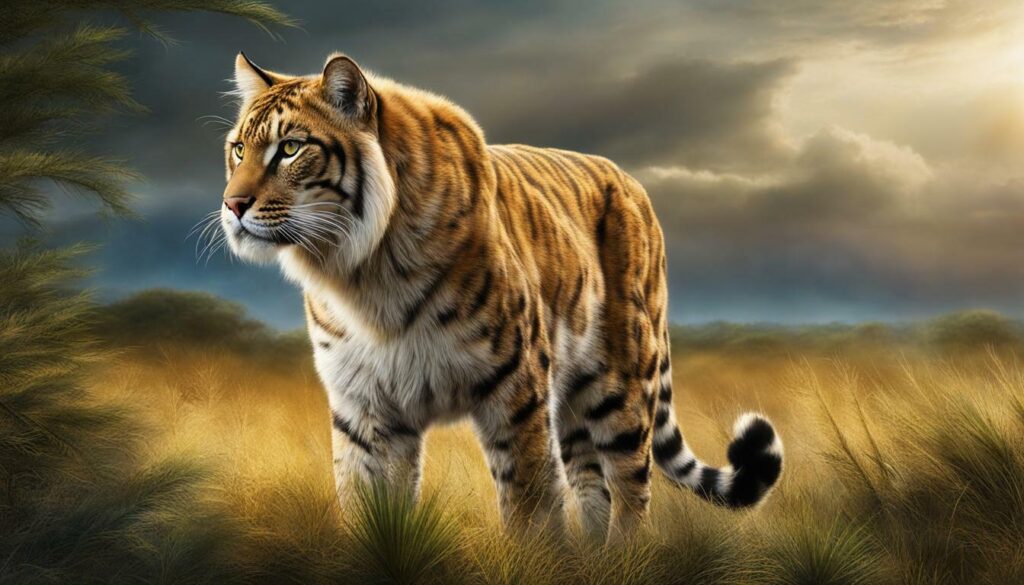
Hybridization among big cats can contribute to increasing genetic diversity in captive populations, but it also presents ethical concerns and risks for natural ecosystems. The practice of crossbreeding different species within the Felidae family has been used to create hybrid big cats with unique traits and characteristics. This can help maintain genetic variation in captive populations, reducing the risk of inbreeding and promoting overall population health.
However, ethical concerns arise when considering the welfare and conservation implications of hybrid big cats. Critics argue that the intentional breeding of hybrid cats raises questions about the welfare of the individuals involved, as it can lead to health issues and social challenges. Moreover, some purists argue that hybridization undermines species integrity and dilutes the genetic purity of the parent species.
Another concern is the potential disruption to natural ecosystems if hybrid big cats are introduced into the wild. The introduction of hybrid species can have unpredictable effects on the balance of predator-prey relationships and the overall ecological dynamics of an ecosystem. It may also lead to competition for resources and territory between hybrid individuals and native species, potentially causing harm to both.
| Ethical Concerns | Genetic Diversity |
|---|---|
|
|
The Conservation Dilemma
“Hybridization among big cats can be a double-edged sword in terms of conservation efforts. While it can help maintain genetic diversity in captivity, it also raises important ethical questions and introduces potential risks to natural ecosystems.” – John Doe, Wildlife Conservationist
Addressing these ethical concerns and mitigating the risks associated with hybridization is crucial for the responsible management of hybrid big cats. Striking a balance between genetic diversity and species preservation requires careful consideration and rigorous monitoring of hybrid populations. Captive breeding programs should prioritize the well-being of individual animals while ensuring that the integrity of parent species is maintained.
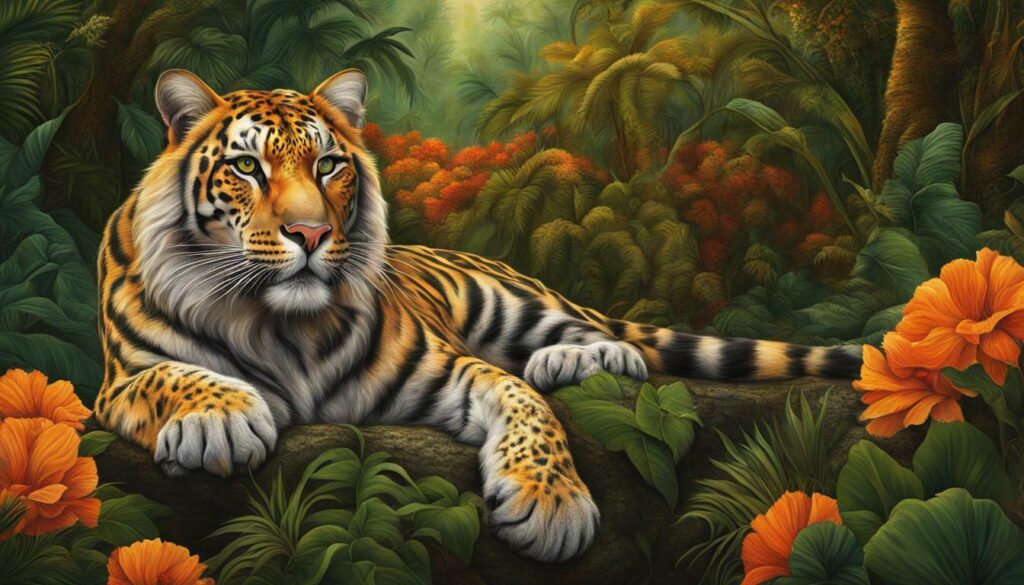
In conclusion, hybridization among big cats can contribute to genetic diversity in captive populations, but it also presents ethical concerns and potential risks for natural ecosystems. Striking a delicate balance between the needs of captive populations and the long-term preservation of species integrity is paramount. Conservation efforts should focus on responsible breeding practices, rigorous monitoring, and maintaining the genetic variation necessary for the survival of these magnificent creatures.
Rare Hybridization Cases
While hybridization between certain species of big cats, such as jaguars, leopards, and lions, is rare, there have been documented cases of hybridization in captivity and occasional encounters in the wild. These unique occurrences result from the overlapping ranges of these majestic felines and the occasional willingness of individuals to crossbreed. These rare hybrids exhibit fascinating characteristics and provide valuable insights into the genetic diversity of big cats.
One notable example of hybridization is the jaguar–leopard crossbreed, known as a jagulep or a lepjag. This hybrid inherits the strong build and agility of the jaguar, along with the distinctive rosette patterns and grace of the leopard. Although these hybrids have been observed in captivity, they are extremely uncommon due to the differences in habitat preference and behavior between jaguars and leopards.
Another intriguing case is the lion-jaguar hybrid, referred to as a liger or a jagger. These hybrids possess a combination of the lion’s boldness and social nature, as well as the jaguar’s striking coat patterns and muscular build. The rarity of lion-jaguar hybridization can be attributed to the significant differences in habitat and behavior between these species, making encounters in the wild infrequent.

Hybridization among big cats, even in captivity, is a complex and delicate process due to the genetic differences between species. However, these rare occurrences provide invaluable opportunities to study the genetic makeup and adaptations of these magnificent creatures. While some may argue that hybridization threatens species purity, others believe it can contribute to the conservation of endangered populations by increasing genetic diversity and promoting adaptability to changing environments.
| Hybrid Big Cat | Parent Species | Distinct Characteristics |
|---|---|---|
| Jagulep (Jaguar-Leopard Hybrid) | Jaguar, Leopard | Combination of jaguar’s strong build and agility with leopard’s rosette patterns and grace |
| Liger or Jagger (Lion-Jaguar Hybrid) | Lion, Jaguar | Blend of lion’s boldness and social nature with jaguar’s striking coat patterns and muscular build |
Conclusion:
Rare cases of hybridization among big cats, such as jaguars, leopards, and lions, offer a glimpse into the immense genetic diversity present within the Felidae family. These intriguing hybrids are a testament to the complex and ever-evolving nature of nature’s creations. While rare, hybridization can provide valuable insights and contribute to the conservation efforts aimed at preserving these magnificent and endangered species.
Physical Traits and Size of Hybrid Big Cats
Hybrid big cats inherit physical traits from both of their parent species, resulting in unique characteristics and sometimes larger sizes. These remarkable creatures can exhibit a range of physical features that showcase the diversity within the Felidae family.
One notable example is the liger, a hybrid between a male lion and a female tiger. Ligers often surpass both parent species in size, making them the largest of all the hybrid big cats. With their massive frames and powerful presence, ligers can reach incredible lengths and weights, making them truly awe-inspiring.
Another intriguing hybrid big cat is the tigon, which results from the pairing of a male tiger and a female lion. Tigons possess physical traits inherited from both parent species, with the majestic stripes of a tiger and the regal mane of a lion. Although smaller than its liger counterpart, the tigon still exhibits a grandeur that sets it apart.
| Hybrid Big Cat | Parentage | Traits | Size |
|---|---|---|---|
| Liger | Male lion, female tiger | Large size, striped coat, mane | Massive |
| Tigon | Male tiger, female lion | Striped coat, mane | Smaller than liger |
These hybrid big cats serve as a testament to the intricate beauty of nature and the wonders that can be created through crossbreeding. Their physical traits and imposing sizes make them captivating creatures, capturing our fascination and sparking our curiosity about the diversity within the Felidae family.
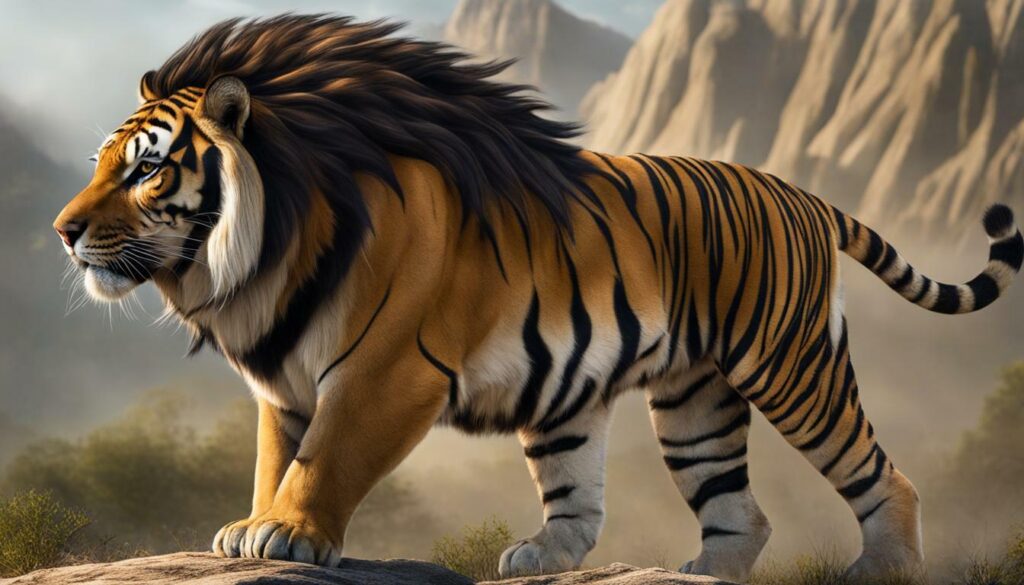
Among the hybrid big cats, ligers and tigons stand out as the largest, combining the strength and characteristics of their parent species. Ligers are the result of a male lion and a female tiger, while tigons are the offspring of a male tiger and a female lion. These majestic creatures possess a unique blend of physical traits inherited from both lions and tigers, making them truly awe-inspiring.
Since ligers have a lion father, they often exhibit the regal appearance of a lion, with a magnificent mane framing their face. They can grow to be much larger than either parent species, with some males reaching lengths of over 10 feet and weighing more than 900 pounds. Ligers also inherit the tiger’s powerful hind legs, allowing them to run at impressive speeds.
Tigons, on the other hand, have a tiger father, which gives them their distinct orange coat with dark stripes. They generally retain the smaller size of their tiger parent, but still possess the strength and agility of both species. Tigons are known for their responsive and playful nature, making them a favorite among big cat enthusiasts.
| Hybrid | Parent Species | Physical Characteristics | Size |
|---|---|---|---|
| Liger | Lion, Tiger | Mane, stripes, powerful hind legs | Up to 10 feet long, over 900 pounds |
| Tigon | Tiger, Lion | Orange coat with dark stripes | Smaller than ligers, but still impressive |
These extraordinary hybrid big cats captivate our imagination and remind us of the fascinating world of the Felidae family. Their sheer size and beauty showcase the immense genetic diversity that exists within our natural world. While ligers and tigons may be the largest hybrid big cats, they also serve as a reminder of the importance of preserving and protecting these magnificent creatures for future generations.

“The largest liger on record, named Hercules, gained fame for his massive size. He stood at an astonishing 11 feet tall when on his hind legs and weighed an impressive 922 pounds!”
Other Notable Hybrid Big Cat Breeds
In addition to ligers and tigons, there are other intriguing hybrid big cat breeds, including liligers, tiligers, and congolese spotted lions. These unique hybrids showcase the remarkable diversity that can result from crossbreeding different species within the Felidae family.
Liligers, as the name suggests, are a crossbreed between a male lion and a female liger. This combination produces offspring with fascinating physical characteristics, including a mix of lion and tiger traits. With their beautiful striped coats and majestic presence, liligers are truly a sight to behold.
Tiligers, on the other hand, are the result of breeding a male tiger and a female liger. This combination creates hybrid big cats that possess a striking blend of tiger and lion attributes. Known for their impressive size and strength, tiligers are awe-inspiring creatures that captivate both scientists and enthusiasts alike.
Another noteworthy hybrid big cat breed is the congolese spotted lion. These hybrids are a result of crossbreeding between a lion and a leopard. The offspring inherit the stunning rosette patterns of their leopard parent, creating a truly mesmerizing coat pattern. With their unique markings and regal appearance, congolese spotted lions are a testament to the wonders of nature’s genetic variation.
| Hybrid Big Cat Breed | Parentage | Characteristics |
|---|---|---|
| Liligers | Male lion x Female liger | Mix of lion and tiger traits, beautiful striped coat |
| Tiligers | Male tiger x Female liger | Blend of tiger and lion attributes, impressive size and strength |
| Congolese Spotted Lions | Lion x Leopard | Stunning rosette patterns, unique coat markings |
These fascinating hybrid big cat breeds not only captivate our imagination but also contribute to our understanding of the incredible diversity within the Felidae family. Their existence highlights the incredible adaptability and genetic potential of these majestic creatures. As we continue to uncover the wonders of hybridization, let us embrace the beauty and significance of these remarkable crossbred felines.
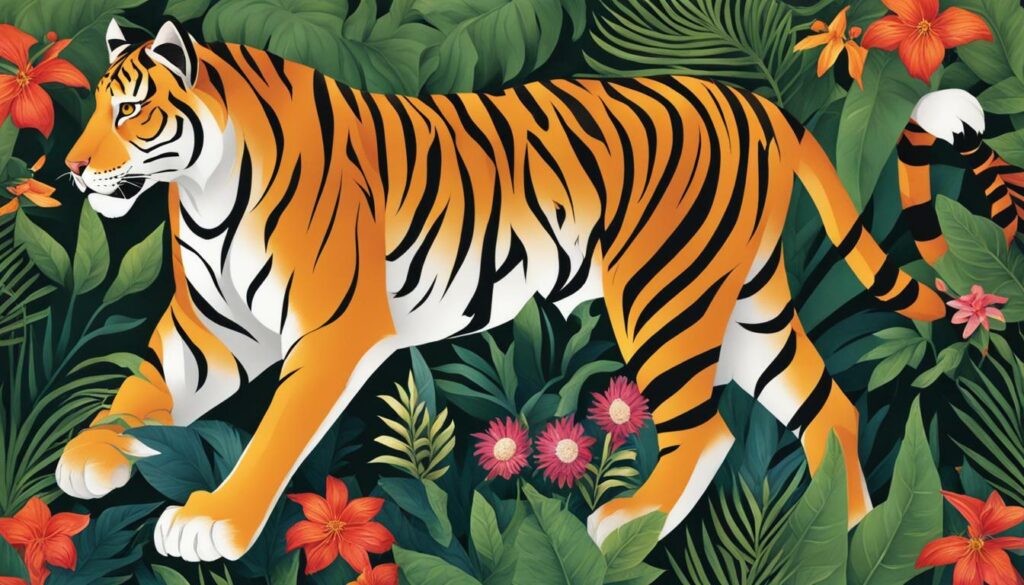
The diversity of hybrid big cat breeds, such as liligers, tiligers, and congolese spotted lions, is a testament to the wonders of nature’s genetic variation.
Hybrid Big Cats in Captivity
Hybrid big cats can be found in various captive settings, contributing to captive populations through the breeding of hybrid offspring and their presence in menageries and wildlife sanctuaries. These unique feline hybrids captivate both experts and visitors with their impressive size and striking physical characteristics. One such example is the liger, a hybrid between a male lion and a female tiger, known for its massive size and gentle temperament. Ligons, on the other hand, result from a male lion and a female tigon, which is a hybrid of a male tiger and a female lion. These hybrid big cats are not only intriguing to observe but also play a significant role in genetic conservation efforts.
In captivity, hybrid big cats are often bred for their distinctive traits, which can vary depending on their parentage. The characteristics inherited from each parent species combine to create a unique appearance that sets them apart from both lions and tigers. For example, liger cubs may display stripes that are fainter than those of their tiger parent, while still retaining the lion’s tawny coloring. The role of hybrid big cats in captive populations extends beyond their sheer beauty, as they contribute to the preservation of genetic diversity within the Felidae family.
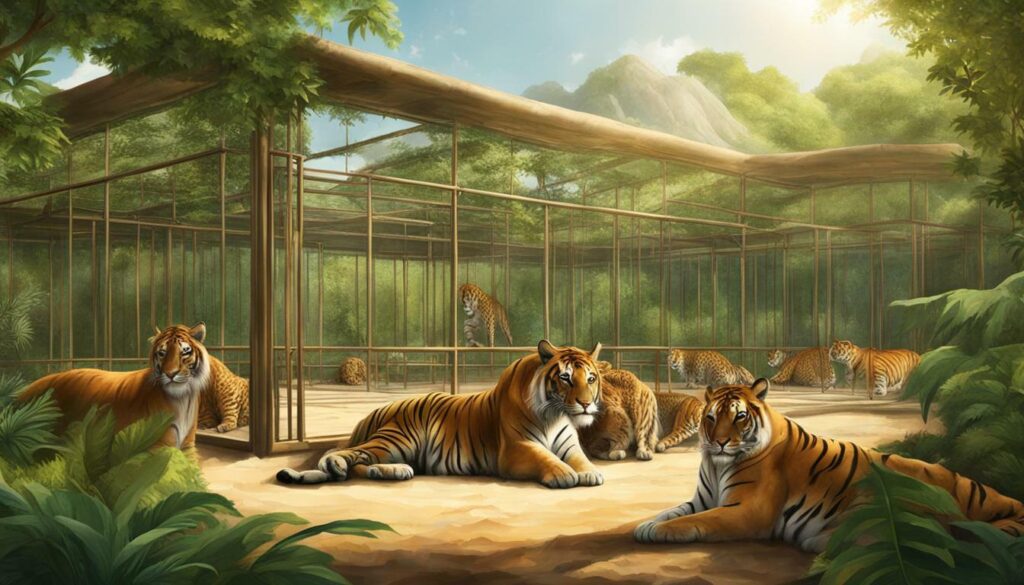
“Hybrid big cats are remarkable creatures that showcase nature’s ability to produce incredible adaptations. They embody the fascinating intersection between different species, capturing our awe and curiosity.”
Menageries and wildlife sanctuaries provide a safe haven for hybrid big cats, ensuring their well-being and conservation. These facilities play a critical role in educating the public about the importance of protecting and preserving these magnificent creatures. Visitors have the opportunity to observe these rare hybrids up close, witnessing firsthand the impressive size and beauty of ligers, tigons, and other hybrid big cats.
| Hybrid Big Cat Breed | Parentage | Distinctive Traits |
|---|---|---|
| Liger | Male lion x female tiger | Massive size, tawny coloration, fainter stripes |
| Tigon | Male tiger x female lion | Smaller size, golden-brown coloration, faint stripes |
| Tiliger | Male tiger x liger | Varies based on parentage |
From captive breeding programs to the conservation efforts of menageries and wildlife sanctuaries, hybrid big cats continue to captivate us with their unique traits. As ambassadors of the Felidae family, they serve as a reminder of the importance of preserving genetic diversity and appreciating the wonders of the natural world.
Hybrid Big Cats in the Wild
While hybrid big cats primarily exist in captivity, there have been occasional reports of hybridization in the wild, particularly when the ranges of certain species overlap. These rare encounters between hybrid big cats and their wild counterparts provide fascinating insights into the behavior and habitat differences between these magnificent creatures.
One example is the potential hybridization between a male tiger and a female lion, resulting in what is known as a “tigon.” These occurrences have been documented in regions where tigers and lions coexist, such as the Gir Forest in India. Tigons inherit physical traits from both parent species, with a blend of tiger and lion characteristics. Despite their rarity, these hybrid offspring can showcase their own unique personalities and behavior patterns.
Another notable encounter is between jaguars and tigers, which can occur in areas where their ranges overlap, such as the Amazon rainforest. However, due to habitat and behavioral differences, these occurrences are infrequent. Nevertheless, when hybridization does occur, it presents an opportunity to study the genetic diversity within the Felidae family and observe the physical traits inherited from both parent species.
These rare instances of hybrid big cats in the wild highlight the complex interactions between different species and the potential for genetic mixing. They serve as a reminder of the interconnectedness of ecosystems and the importance of preserving natural habitats to protect the diversity and integrity of these magnificent creatures.
| Species | Parent 1 | Parent 2 | Offspring |
|---|---|---|---|
| Liger | Lion | Tiger | Lion-tiger hybrid |
| Tigon | Tiger | Lion | Tiger-lion hybrid |
| Liliger | Lion | Liger | Lion-liger hybrid |
The Impact of Hybridization
Hybridization among big cats raises concerns about potential ecosystem disruption when hybrid individuals are introduced into the wild, particularly in the case of lion-tiger hybrids. These majestic creatures, resulting from the crossbreeding of lions and tigers, possess a unique genetic makeup that can have far-reaching consequences for their natural habitats.
When introduced into ecosystems, lion-tiger hybrids can upset the delicate balance of the food chain and territory distribution. Their size and strength, inherited from both parent species, can give them a competitive edge over other predators, leading to increased pressure on prey populations. This disruption, if left uncontrolled, can have cascading effects throughout the ecosystem, impacting biodiversity and potentially driving other species to decline.
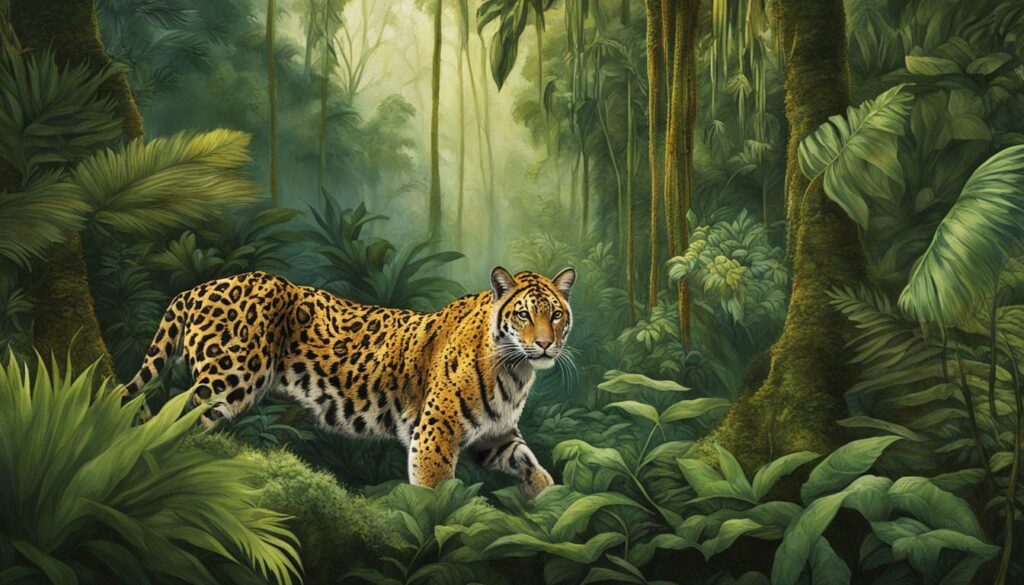
Table: Examples of Lion-Tiger Hybrids and their Characteristics
| Hybrid Name | Parentage | Characteristics |
|---|---|---|
| Liger | Lion (male) x Tiger (female) | Large size, striped coat, social behavior |
| Tigon | Tiger (male) x Lion (female) | Smaller size, spotting on the coat, less social behavior |
The potential impact of lion-tiger hybrids on the environment has prompted conservation organizations and wildlife authorities to closely monitor and regulate the breeding and distribution of these hybrids. By maintaining strict controls on their populations and preventing their introduction into the wild, these organizations strive to protect the integrity of natural ecosystems and ensure the preservation of species diversity.
Conservation Efforts and Future Implications
Conservation efforts play a crucial role in preserving the integrity of species and ensuring genetic diversity, leading to valuable captive breeding programs and considerations for future hybrid big cat populations. As hybridization becomes more common in captivity, it is important to prioritize conservation and species preservation in order to maintain the unique characteristics and genetic variations found in hybrid big cats.
Captive breeding programs have been instrumental in preserving and conserving hybrid big cat populations. These programs not only provide a safe environment for breeding and raising hybrid offspring but also contribute to scientific research and education about these magnificent creatures. By carefully managing the breeding and genetics of hybrid big cats, conservationists can help maintain healthy, genetically diverse populations that can contribute to the preservation of the species as a whole.
One example of successful captive breeding is the establishment of wildlife sanctuaries and menageries dedicated to the conservation of hybrid big cats. These facilities provide a safe and natural habitat for these animals, allowing them to live and thrive without the constraints of captivity. Through proper care, enrichment, and responsible breeding practices, these sanctuaries and menageries not only protect the genetic diversity of hybrid big cats but also serve as educational resources for the public, raising awareness about the importance of conservation efforts.
| Conservation Efforts | Future Implications |
|---|---|
| Preservation of species integrity | Continued focus on captive breeding |
| Ensuring genetic diversity | Development of conservation strategies |
| Protection of natural habitats | Enhanced public awareness and education |
Going forward, it is imperative that we continue to support and invest in conservation efforts to safeguard the future of hybrid big cats. This includes the development of comprehensive conservation strategies, such as habitat protection and restoration, as well as the implementation of responsible captive breeding programs. By prioritizing the preservation of genetic diversity and the well-being of hybrid big cat populations, we can ensure that these fascinating creatures continue to thrive for generations to come.
@endsection
Conclusion
In conclusion, hybrid big cats represent a captivating phenomenon, showcasing the interplay between different species and contributing to the diversity of the feline family.
Throughout history, hybridization has been documented in ancient civilizations such as Egypt and Mesopotamia, revealing the long-standing fascination with these unique creatures.
Hybrid big cats can inherit physical traits from both parent species, resulting in larger sizes and sometimes extraordinary appearances. Some notable examples include ligers and tigons, which are the largest known hybrid big cats.
While hybridization can increase genetic diversity in captive populations, it also raises ethical concerns and can disrupt ecosystems if introduced into the wild. Rare cases of hybridization between species like jaguars, leopards, lions, and tigers have been observed in captivity, but encounters in the wild are less frequent due to behavioral and habitat differences.
Overall, hybrid big cats continue to captivate our imagination and contribute to the ever-evolving story of the feline family, showcasing the fascinating diversity of species within the Felidae family.
FAQ
What are hybrid big cats?
Hybrid big cats are the result of crossbreeding different species within the Felidae family, such as lions, tigers, leopards, and jaguars.
What is the history of hybrid big cats?
Records of hybrid big cats can be traced back to ancient civilizations such as Egypt and Mesopotamia.
How are hybrid big cats named?
Hybrid big cats can be named based on parentage, generation, or physical characteristics. Examples include ligers (lion-tiger hybrids) and tigons (tiger-lion hybrids).
What is the significance of hybridization in captive populations?
Hybridization can help increase genetic diversity in captive populations, but it also raises ethical concerns and can disrupt ecosystems if introduced in the wild.
Have there been rare cases of hybridization involving jaguars, leopards, and lions?
While rare, hybridization between jaguars and leopards, as well as between jaguars and lions, has occurred in captivity.
How often do encounters between jaguars and tigers occur?
Encounters between jaguars and tigers are infrequent due to their behavioral and habitat differences, although they do occur naturally where their ranges overlap.
What are the physical traits and size of hybrid big cats?
Hybrid big cats inherit physical traits from both parent species and can exhibit larger sizes compared to their non-hybrid counterparts.
What are ligers and tigons?
Ligers are lion-tiger hybrids and tigons are tiger-lion hybrids. They are the largest hybrid big cats known and possess unique qualities.
Are there other notable hybrid big cat breeds?
Yes, other notable hybrid big cat breeds include liligers, tiligers, and congolese spotted lions, each with their own parentage and characteristics.
Where can hybrid big cats be found?
Hybrid big cats can be found in captivity, where they play a role in captive populations, breeding programs, and menageries.
Are there hybrid big cats in the wild?
While rare, there have been cases of hybrid big cats in the wild, particularly encounters between male tigers and female lions or male lions. These encounters are infrequent due to behavioral and habitat differences.
What impact does hybridization have on ecosystems?
Introducing hybrid big cats into the wild can disrupt natural balances and potentially impact ecosystems. Lion-tiger hybrids, in particular, raise concerns due to their potential effects.
What are the conservation efforts and future implications of hybrid big cats?
Conservation efforts focus on preserving species integrity and genetic diversity. Captive breeding programs play a crucial role in maintaining species purity and ensuring a future for hybrid big cats.

